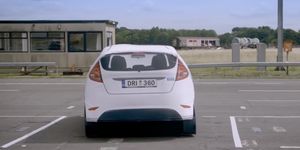The Low-down on the Green New Deal
What is the Green New Deal? This is a term that has been thrown around a lot in recent months, equally in the political sphere as in the environmental sphere. But do you actually know what it is? Here’s the one-sentence elevator pitch:
The deal is a plan that aims to eliminate US greenhouse gas pollution within one decade while focusing on new jobs and lessening inequality.
That explanation comes from the Sunrise Movement’s website, the youth-led movement that is trying to, in their own words, “make climate change an urgent priority across America, end the corrupting influence of fossil fuel executives on our politics, and elect leaders who stand up for the health and wellbeing of all people.”
You’ve probably also heard Representative-elect Alexandria Ocasio-Cortez’s name attached to the Green New Deal because she has been the main political champion behind the plan. She’s posted a draft of the plan on her website, though it is still in outline form. The draft outlines how the nation could eliminate greenhouse gas emissions from electricity, transportation, manufacturing, agriculture and other sectors within 10 years. The deal also aims for 100% renewable energy and includes a job guarantee program “to assure a living wage job to every person who wants one”. It would seek to “mitigate deeply entrenched racial, regional and gender-based inequalities in income and wealth”. The draft also goes into depth about the potential implementation of a nationwide energy-efficient smart grid, which could bolster clean energy start-ups around the country.
This sounds great, but is it possible? Even with politics aside, that answer is murky. Right off the bat, we can say for sure that this is going to cost – a lot. However, there are conflicting opinions on the plausibility of the deal. The Guardian reports, “With enough money and political will, the US electric grid could make major changes. Currently, the US gets 17% of its power from renewable energy and less than half of that is from wind and solar. Nuclear power, which uses mined uranium but is carbon-free, makes up 20% of the grid. Turning to all-renewable power would require large amounts of battery storage, for when the wind isn’t blowing and the sun isn’t shining. The technology is not available but it is advancing.”
Christine Tezak, an analyst at ClearView Energy Partners, is cautious about the timeline of the plan. According to her, decarbonizing electricity in 10 to 15 years would be “practically overnight in infrastructure terms.” And that’s just electricity. Decarbonizing the rest of the economy would be “an even heavier lift,” she said.
Nevertheless, environmentalists say that now is the time. With the recent report from the US federal government stating that we are on a projection to reach 3-4C degrees of warming and we have only 12 years to take action before our planet spirals into doomsday, people are uniting to prioritize climate change.
Sources: The Guardian, Sierra Club, Sunrise Movement









